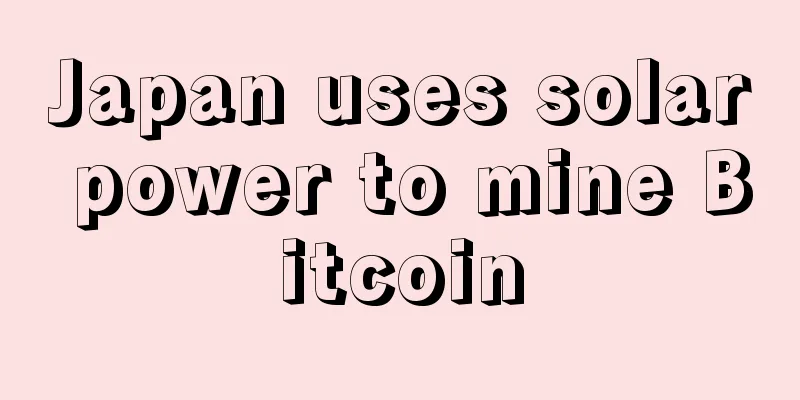Japan uses solar power to mine Bitcoin

|
Some people are starting to use solar power to mine Bitcoin again. Recently, Kumamoto-Energy, a local energy producer and supplier in Kumamoto City, Japan, announced that it will deploy more environmentally friendly large-scale solar power plants to solve its electricity consumption problem for mining Bitcoin. The company established a subsidiary to operate a cryptocurrency mining company called OZ Mining in November 2017. The company said its goal is to efficiently use surplus electricity from its solar power plants by mining cryptocurrencies. In the past few years, some Bitcoin enthusiasts have used renewable energy sources (such as solar power generation) to reduce the electricity costs of Bitcoin mining. As early as July 2012, someone built a 1.7 kW solar power station in a remote mining town in Australia specifically for mining Bitcoin. The Bitcoin miner explained that instead of relying on solar power to drive GPU mining and operate a Bitcoin mining pool economically, he used FPGA to mine Bitcoin. "When the FPGA reaches 100w power, I get 1.5GH/s of computing power, and when the GPU reaches 100w power, I only get 350MH/s of computing power. As long as I access the wireless Internet, I don't need any form of ground power supply," he said. As the news spread, many Bitcoin enthusiasts began to talk about the miner's solar Bitcoin mining pool strategy, and attracted more miners to share their solar mining experience. Some professionals even calculated the cost of investing in a solar Bitcoin mining pool, but found that the cost-return cycle was very long. Then, in 2015, European bitcoin miner Antminer revealed a new solar-powered bitcoin mining pool scheme, using the bitcoins he had previously mined to buy most of the outdated equipment, the equivalent of about £1,000. Experts believe that Antminer's solution is indeed profitable, but the profit is not maximized. A Bitcoin club called Nastymining has also recently built a small solar-powered Bitcoin mining pool and partnered with Sunpower, a well-known American solar company, to power it, while the electronic currency exchange Yobit has also donated a wind turbine to the mining project, bringing its green energy system installed capacity to more than 10kw. As we all know, the main mining method of Bitcoin, the world-famous cryptocurrency, requires electricity. Data shows that as of November 2017, the annual electricity consumption of global Bitcoin mining was approximately 29.05TWh, equivalent to 0.13% of the world's total electricity consumption, and the total annual cost was approximately US$1.5 billion. According to some analysts, this is equivalent to 116% of Ireland's current annual electricity consumption, and has exceeded the annual electricity consumption of 159 countries including Iraq. If the electricity consumption of Bitcoin miners is concentrated in one country for comparison, it will rank around 61st on the global electricity consumption list. At the same time, the electricity consumption of Bitcoin mining is still growing at a rate of about 20%-30%. So, is it worth it for so many Bitcoin miners to start using renewable energy electricity? Kumamoto Energy says it uses “excess electricity” from solar power plants, and OZ Mining buys electricity from Kumamoto Energy at a price of $10-19/kWh (depending on the supply area, contract and season). Cryptocurrency analysts believe that Kumamoto Energy's approach is typical, meaning that the cryptocurrency mining economy is making renewable energy more affordable and profitable, which can promote a greener future. Some analysts believe that using renewable energy to power mining can not only greatly promote the popularization and consumption of renewable energy, but also greatly reduce carbon dioxide emissions. He cited a coal-fired Bitcoin mine in Mongolia as an example. The electricity it consumes produces 24,000-40,000 kg of carbon dioxide emissions per hour, equivalent to a European car driving 203,000 kilometers. |
<<: Ripple CEO: Cryptocurrency industry should cooperate with regulators
>>: Heavy regulatory blow! On March 8, Bitcoin trading took a big step towards "de-Sinicization"
Recommend
Introduction to face shape: trapezoidal face
Is a trapezoidal face good? As the name suggests,...
What kind of couples or spouses are prone to quarrels?
Marriage is a big event in life, and quarrels are...
Is it good for a woman to have eye bags under her eyes? What is the difference between eye bags and eye bags?
We know that drooping eyebrows are a sign of good...
Changji Prefecture Development and Reform Commission: All companies engaged in virtual "mining" must stop production and rectify before 14:00 on June 9
According to BlockBeats, on June 9, the Changji P...
What is the love luck of a man with a mole on his beard? Good love luck
For a man, luck in love is not just about being l...
Is it bad to have horizontal lines on the root of the nose?
Everyone is very familiar with the bridge of the ...
Facial features that betray love
Facial features that betray love In fact, when ma...
Financial giants are pouring money into a technology called blockchain
Financial industry giants including Visa, Nasdaq,...
What are the characteristics of a noble face?
It is well known that facial features contain sec...
A neutral face and the fortune of the year
Below Sikong, the part next to Sikong is Zhongzhe...
Are women with moles on their noses very charming?
For men, women who are old-fashioned and unromant...
Bitcoin Plots ‘Death Cross’ on Its Price Chart, Next Target $8,600?
Bitcoin prices fluctuated on Thursday as traders ...
Detailed explanation: What is a wife-killing mole?
Moles can affect your own and your spouse's f...
How to tell if your foot shape indicates wealth and fortune
How to tell if your foot shape indicates wealth a...
Face analysis: Do people with small foreheads have good fortune?
In physiognomy, people with narrow foreheads are ...









